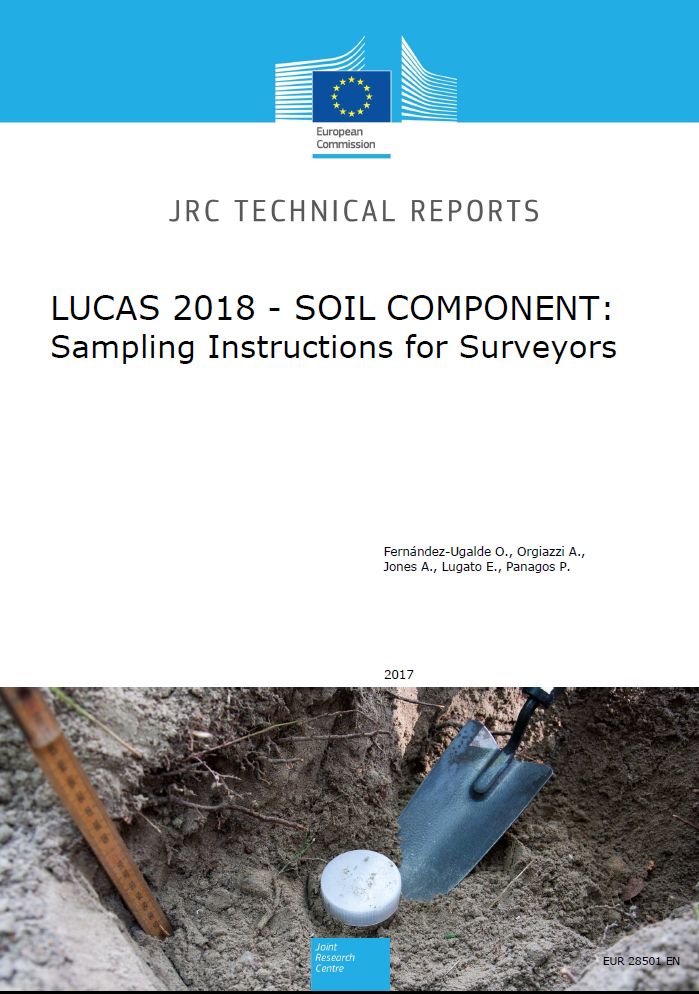This report accompanies the release of the soil dataset collected as part of the 2018 Land Use/Cover Area frame statistical Survey’ (generally referred to as LUCAS Soil). It presents an overview of the laboratory analysis data and provides a detailed description of the results for the European Union (EU) and the United Kingdom as it was still a Member State at the time of the survey. The report describes the spatial variability of soil properties by land cover (LC) class and a comparative analysis of the soil properties for NUTS 2 regions.
Regular monitoring provides a unique perspective on pressures affecting soils. In this respect, the soil module of LUCAS supports the specific needs of the European Commission by collecting data that characterises soil condition and health, which can be affected in relation to land use practices and other activities that are driven by specific policy instruments.
The LUCAS Soil module is the only mechanism that currently provides a harmonised and regular collection of soil data for the entire territory of the EU, addressing all major land cover types simultaneously, in a single sampling period (April – October).
At the same time, the LUCAS Soil module can support further policy needs through a flexibility that permits both the collection of new field data, if required, from new sampling sites. In turn, this can be complemented with additional laboratory analysis (e.g. micronutrients, specific pollutants). This capacity addresses the needs of a diverse policy user base and an evolving policy landscape.
The drive to collect soil samples under the umbrella of LUCAS was led initially by DG Environment, who provided funding for the 2009 survey to collect a baseline dataset on a range of soil characteristics such as organic matter content, nutrient status, fertility, acidification and soil pollution (metals). At that time, the main LUCAS survey was planned for 23 EU Member States (MS). Bulgaria and Romania were added in 2012 while Croatia, Cyprus and Malta were formally included in 2015. In the 2018 survey, all 28 MS at the time were included.
The initial premise was developed to collect samples from a depth of 20 cm following a common sampling procedure from 10% of the sites where field visits were to be carried out as part of the main LUCAS survey. In 2009, this gave around 235,000 possible locations for a nominal target of 23,500 soil samples. At the end of the survey, about 20,000 had been collected. These samples were analysed according to standard analytical methods in a single laboratory for a range of physical and chemical properties. In addition, visible and near-infrared spectra were acquired for all samples. The process was repeated in 2012 for Bulgaria and Romania, where samples were collected from about 2,000 locations. In total, 22,003 samples were analysed for 2009/2012.
In 2015, 90% of the locations sampled in 2009 and 2012 were maintained with the remaining 10% being substituted by new locations, including points at altitudes above 1,000 m, which were out of scope of the earlier surveys. In total, 21,859 samples were collected, of which 4,246 were at new locations compared with the 2009/2012 campaign. In addition, the soil module was extended by the JRC Enlargement and Integration Programme to Albania, Bosnia and Herzegovina, Croatia, Montenegro, North Macedonia, and Serbia (1,015 samples were eventually collected). Switzerland also participated following standard LUCAS protocols (150 samples were collected by Agroscope).
For 2018, 27,069 locations were identified for soil sampling. A soil related activity (i.e. assessing type of erosion, organic soil check sample collection) was made at 19,345 locations (LUCAS Grid Points). After the removal of samples that could not be identified or were mislabelled or lost in transit, the LUCAS 2018 Soil Module dataset contains data for 18,984 locations.



















